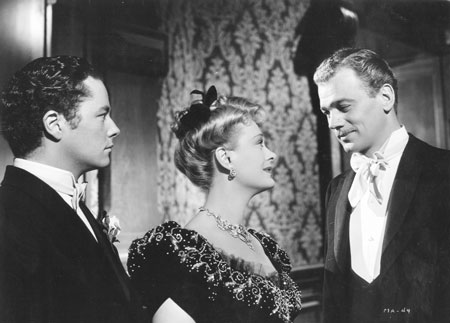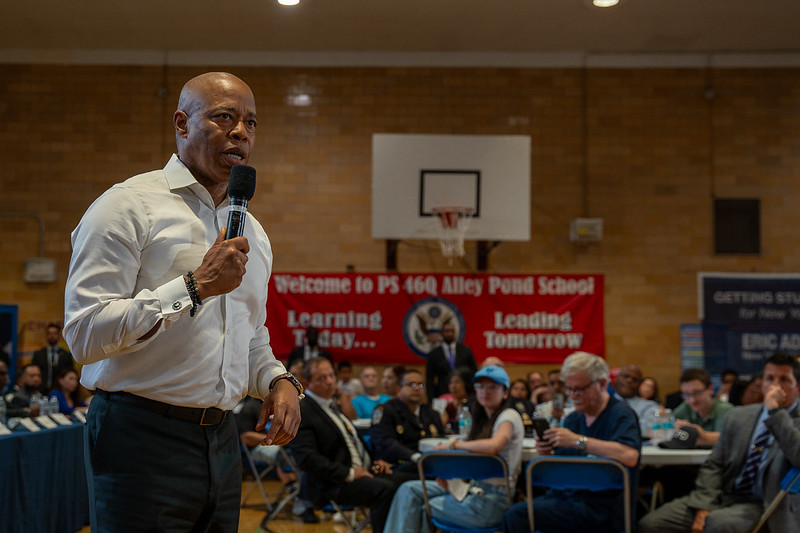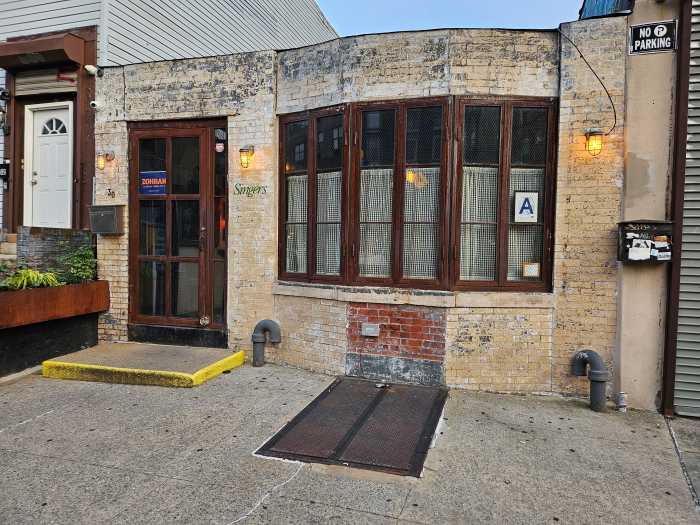By Jerry Tallmer
A great movie is like a great novel, or for that matter a great painting: You can always learn something new. I must, over the years, have seen “The Third Man” two dozen times, but this past weekend, when I took another look for present purposes, three things that had never registered before jumped out at me.
1. Holly Martins’s repeated misspeaking of Major Calloway’s name (Trevor Howard, blowing smoke through his nose, to blundering, naãve Joseph Cotten: “It’s Calloway, not Callahan, I’m English, not Irish”) is paralleled by all-American Holly’s repeated misspeaking of villainous Viennese Dr. Winkle’s name (“VIN-kle, not Winkle”).
2. When Holly and Anna (gorgeous Alida Valli) are poking around the late Harry Lime’s flat, shooting questions at the unlucky porter who’d seen a third man help carry Harry’s body toward the Emperor Joseph statue across the street, she casually, by habit, opens a drawer, extracts a comb from it, runs the comb idly through her hair. A reflex. Of course. This is where she has slept many nights and awakened many mornings.
3. It is not until one full hour has passed that Harry Lime makes physical entry into the 104-minute masterpiece — the most famous delayed entry in all cinema — with Anna’s kitten nosing at the shoes of someone in a dark doorway who will turn out to be a naughtily half-smiling Orson Welles, right?
Wrong. Quite some minutes before that, Dr. Winkle and two other conspirators known to us have had a strategy meeting that takes place midway across a bridge over the Danube. We get a quick glimpse of this get-together from a great distance away — a long, overhead angle shot. The plotters are mere dots. There are four of them — four dots. Three plus one. Harry Lime!
The novel on film that is “The Third Man” was created by Alexander Korda (original idea), Graham Greene (screenplay), Carol Reed (direction), Anton Karas (zither), Orson Welles (acting, some key dialogue), plus various others.
You can reread this spellbinding novel once again at your leisure during the week of April 9-15, when it closes out the two-month Orson Welles retrospective series at Film Forum that opened recently with a new 35mm print of “The Magnificent Ambersons,” the reflective, detailed portrait of an American family with which Welles chose, in 1942 to follow that other, all-encompassing, all-enduring American profile, “Citizen Kane.”
In all, the series — put together by Bruce Goldstein and Harris Dew — embraces some 40 motion pictures that were either directed (and/or written) by Welles, or in which Welles is an actor, or — assembled by others — are about Welles.
This brilliant parade supplies the chance of chances to catch up on such long-neglected, rarely scheduled works as “Mr. Arkadin” (1955 ur-Welles thriller about a mystery billionaire expunging his past); “The Lady From Shanghai” (Irish boyo Welles paying 1948 tribute — via a shootout in a House of Mirrors — to the beauty and sexuality of wife Rita Hayworth); “The Trial,” 1962 (through a doorway and another doorway into the enormous, crowded, factory-sized courtroom of Kafka’s nightmare); “Compulsion,” 1959, in which through one-to-one osmosis Welles conveys the deep humanity of Clarence Darrow, lawyer for Loeb and Leopold; or even “Someone to Love,” in which a benign, worldly-wise Welles lends his thoughts to acolyte Henry Jaglom’s sweet sad 1987 examination of the emotional track record of some friends.
Welles never goes out of date. Well, I take that back. Some of the movies in which he appeared as an actor, in order to pay for the movies he himself was making, or hoped to make, are laughably obsolete bad movies, and some of his work — case in point, as the sad-sack long-lost MIA of “Tomorrow Is Forever,” a soppy 1945 clinker if ever there was one — is hack work, pure and simple.
But some — quite a lot — is not. And the true Welles does not date. Indeed, watching “The Third Man” just this past weekend, waiting along with Holly Martins for Harry Lime to stroll jauntily from far away across that empty stretch of fairground up to the giant Ferris wheel, I was shortly to be hit with another little jolt of past and present.
Everybody knows what Harry Lime said at that Ferris wheel to moralistic Holly; what Orson Welles had him say:
“In Italy, for 30 years under the Borgias, they had warfare, terror, murder, bloodshed, but they produced Michelangelo, Leonardo da Vinci, and the Renaissance. In Switzerland they had brotherly love, they had 500 years of democracy and peace, and what did that produce? The cuckoo clock.”
Yes, and in Switzerland, it would just now occur to me — that Switzerland of neutrality, brotherly love, and the cuckoo clock — they also had Nazi bank accounts, wealth squeezed from the corpses of millions who went up in smoke. The same Switzerland, be it said, in which in this very moment in 2004 some miscreants of the 1940s are being officially “forgiven,” I kid you not, for having saved from the smokestacks as many Jews as they could by sneaking them in over the border, out of the hands of the Gestapo.
Harry Lime would have appreciated all that. In fact, he foresaw it.
I have lived with Orson Welles all my life, which means since the Mercury Players’ “Doctor Faustus” and “Julius Caesar” of high-school field trips, but more particularly since the summer of 1941, when, with college mate Charles G. Bolte, who looked like Welles, spoke like Welles, and would, a year-and-a-half later lose a leg at Alamein, I came out of “Citizen Kane” and walked, stunned, the two of us, up Times Square, both knowing we would never in all our days see a greater movie than that. Which turned out to be true.
“Citizen Kane” is in the retrospective at Film Forum the weekend of March 5-8. You might want to go from there to the exhibition of Orson Welles posters at Posteritati, 219 Centre Street, opposite the old Police Headquarters, through April 15.
“People should cross themselves when they say his name,” Marlene Dietrich is reported to have declared of Welles. What she also did say, does say, in “Touch of Evil” (1958 — at FF March 12-14), is: “He was some kind of a man.”
Listen, do you remember when Charles Foster Kane pushes drunken Jedediah Leland away from the typewriter and sits down to bang out, on deadline, completion of the negative review (of Kane’s mistress as an opera singer) that Jedediah would have written.

































